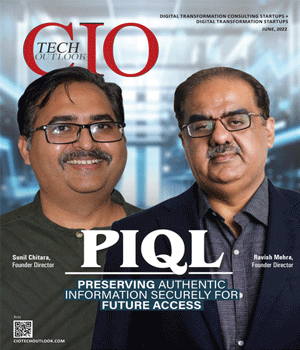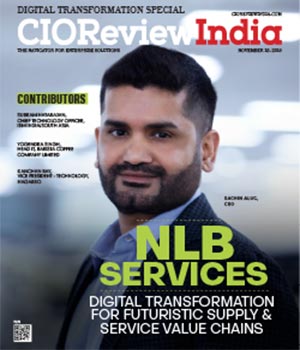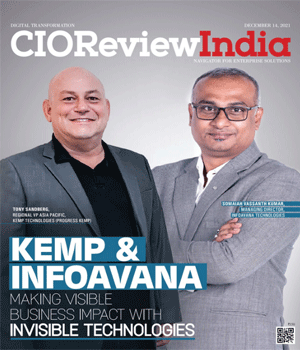
Waves Of Disruption Reform It Service Management Landscape
Paul Hamman, SVP, Head of Cloud Security, SunTrust Bank [NYSE: STI] | Thursday, 21 November 2019, 06:20 IST
![Paul Hamman, SVP, Head of Cloud Security, SunTrust Bank [NYSE: STI]](https://www.ciotechoutlook.com/newsimages/special/lQgBv20R.jpeg) Information Technology Service Management (ITSM) has evolved significantly over the course of the last two and half decades. We started out with a “break/fix” reactive model and have morphed into a proactive model. We have put tools and capabilities in place to protect user communities from the most common types of issues leaving only the more complex and catastrophic types of events to manage. Not to mention the user communities have become more tech savvy along the way as well. As the ITSM industry has matured compliance frameworks have also found their way into the industry to provide a structured means to ensure minimal standards for delivering IT services.
Information Technology Service Management (ITSM) has evolved significantly over the course of the last two and half decades. We started out with a “break/fix” reactive model and have morphed into a proactive model. We have put tools and capabilities in place to protect user communities from the most common types of issues leaving only the more complex and catastrophic types of events to manage. Not to mention the user communities have become more tech savvy along the way as well. As the ITSM industry has matured compliance frameworks have also found their way into the industry to provide a structured means to ensure minimal standards for delivering IT services.
In the past slow connectivity options and immature software prevented users from being able to receive near real-time support for any issue that they might have encountered regardless if the problem was with their workstation, a piece of software on the workstation, or a website they were trying to use. These types of problems often required a support technician to come and physically be “on-site” to be able to see exactly what the issue was to provide corrective actions. Not to mention you would have to call and arrange an appointment for them to meet you to provide the assistance.
One of the key contributors to this evolution has been the metamorphosis of the software industry. Long past are the days of waiting 12-18 months for software to be updated to provide new features or capabilities to end users. The most successful software delivery shops are typically delivering new features or capabilities every 2 weeks using “agile” iterative approaches. Enter the “cloud” and high speed connectivity, with the cloud and the plethora of high speed connectivity options available to consumers, small businesses, and enterprises today the options to enable tooling and capabilities to protect users from productivity interruptions are endless.
Utilizing ITSM frameworks behind the scenes helps ensure that due diligence has been performed to ensure delivery of the high speed connectivity options and cloud services that provide the backbone of IT services being consumed by consumers, small businesses, and enterprises. Ensuring that service level agreements (SLAs) can be met with redundancy and resiliency considerations and that they have been designed to account for potential outages or degradation of services. Appropriate service monitoring and even ensuring that you have a backup for your monitoring in place is also as critical as the services themselves.
Today consumers, small businesses, and enterprises can leverage email and cloud storage options that often provide all user communities with the same level of service availability and security that in the past only enterprises could afford to implement. These highly available and secure capabilities provide users of all types with proactive data storage protection, protecting their end users from catastrophic workstation and even smartphone failures that in the past could result in data loss or expensive data recovery scenarios.
With the broad and cheap availability of Infrastructure as a Service (IaaS), Software as a Service (SaaS), and Platform as a Service (PaaS) offerings available to consumers, small businesses, and enterprises, everyone can start leveraging these capabilities to their advantage. The small “break/fix” IT support companies can provide the same level of services to their customers that enterprises use for their end users as well. In conjunction with the high speed connectivity options and cloud services offering Anti-Virus, remote workstation/smartphone support options, enhanced endpoint monitoring, and the broad service offerings available now, all provide end users with the ability to have near real-time support for issues as they arise as well as readily available knowledgebase articles and search engines linking into forums on how to correct issues on your own.
CIO Viewpoint
The Constantly Evolving Technology Landscape in...
By Janifha Evangeline
Navigating the Digitalization of Mining Industry
By Janifha Evangeline
How To Achieve An Effective Digital Transformation
By Yogendra Singh, Head-IT/SAP, Barista Coffee Company Limited
CXO Insights
No-code platforms: Enterprise-wide Adoption...
By Rahul Murthi, Director at Acies
Unleashing the Potential of IT in Engineering...
By Gyan Pandey, Head - Digital/CDO, Voltas
Low Code and Artificial Intelligence - The...



.jpg)

.jpg)





